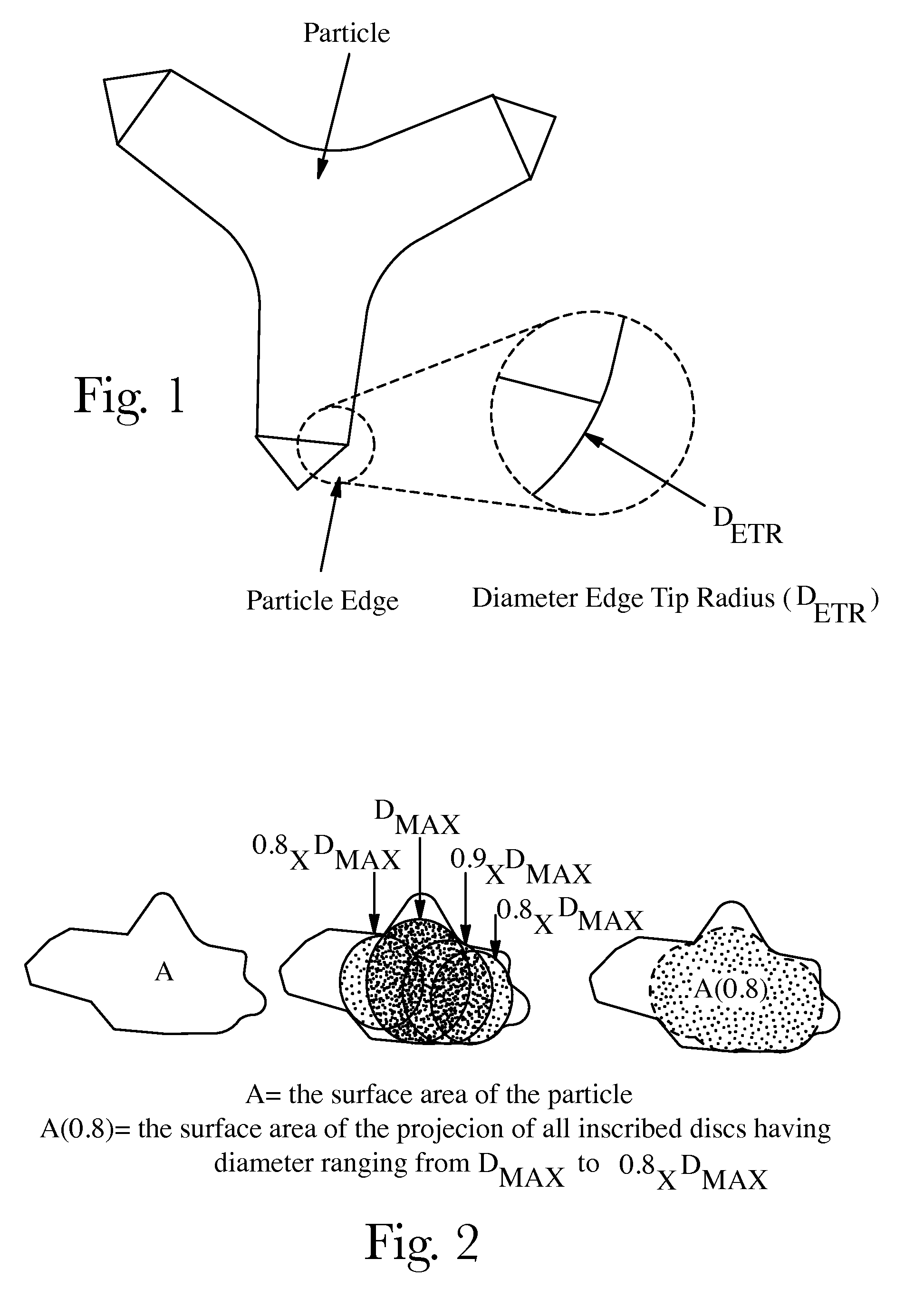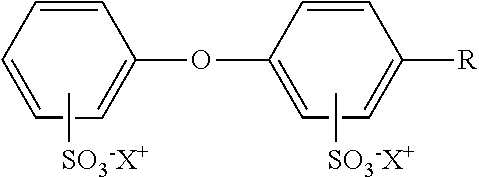Liquid cleaning and/or cleansing composition
a technology which is applied in the field of liquid cleaning and/or cleansing composition, can solve the problems of poor surface safety profile of compositions with an adequate surface safety profile, and insufficient level of cleaning performance, etc., to achieve good cleaning/cleansing performance, low level, and high formulation and process cost
- Summary
- Abstract
- Description
- Claims
- Application Information
AI Technical Summary
Benefits of technology
Problems solved by technology
Method used
Image
Examples
examples
[0157]These following compositions were made comprising the listed ingredients in the listed proportions (weight %). Examples 1-43 herein are met to exemplify the present invention but are not necessarily used to limit or otherwise define the scope of the present invention.
[0158]Abrasive particle used in the examples below were ground from rigid polyurethane foam (controlled foam structure e.g.: foam density, cell size, strut aspect ratio and % cell size content). Polyurethane foam is synthesized from reaction of a diisocyanate (e.g.: base on polymeric methylene diphenyl diisocyanate) and polyols (e.g.: polyether or polyester-based polyol). Wherein the diisocyanate is for example Lupranate M200R from BASF and the polyol is for example Lupranol 3423 from BASF. Foam were ground into small particles and sieved using a rotary mill and particle selection was done with used of air jet sieving instrument from Retsch.
Hard surface cleaner Bathroom composition:% Weight123C9-C11 EO8 (Neodol 91...
examples 24 to 27
are made the following way:
[0160]Add Carbopol® to de-ionized free water of the formulation. Add all surfactants except cationics and betaines. If the pH is less than 6 then add a neutralizing agent (typically a base i.e., Triethanolamine, sodium hydroxide) to adjust to a pH greater than 6. If necessary, apply gentle heat to reduce viscosity and help minimize air entrapment. Add betaine and / or cationic surfactants. Add conditioning agents, additional rheology modifiers, pearlizing agents, encapsulated materials, exfoliants, preservatives, dyes, fragrances, abrasive particles and other desirable ingredients. Lastly, if desired reduce the pH with an acid (i.e. citric acid) and increase viscosity by adding sodium chloride.
Oral care composition (toothpaste)2829303132Sodium Gluconate1.0641.0641.0641.0640.600Stannous fluoride0.4540.4540.4540.4540.454Sodium fluorideSodium monofluorophosphateZinc Lactate0.6700.6700.6700.6702.500Glycerin————36.000Polyethylene glycol 3007.000Propylene Glycol7....
PUM
| Property | Measurement | Unit |
|---|---|---|
| area-equivalent diameter | aaaaa | aaaaa |
| pH | aaaaa | aaaaa |
| pH | aaaaa | aaaaa |
Abstract
Description
Claims
Application Information
 Login to View More
Login to View More - R&D
- Intellectual Property
- Life Sciences
- Materials
- Tech Scout
- Unparalleled Data Quality
- Higher Quality Content
- 60% Fewer Hallucinations
Browse by: Latest US Patents, China's latest patents, Technical Efficacy Thesaurus, Application Domain, Technology Topic, Popular Technical Reports.
© 2025 PatSnap. All rights reserved.Legal|Privacy policy|Modern Slavery Act Transparency Statement|Sitemap|About US| Contact US: help@patsnap.com



